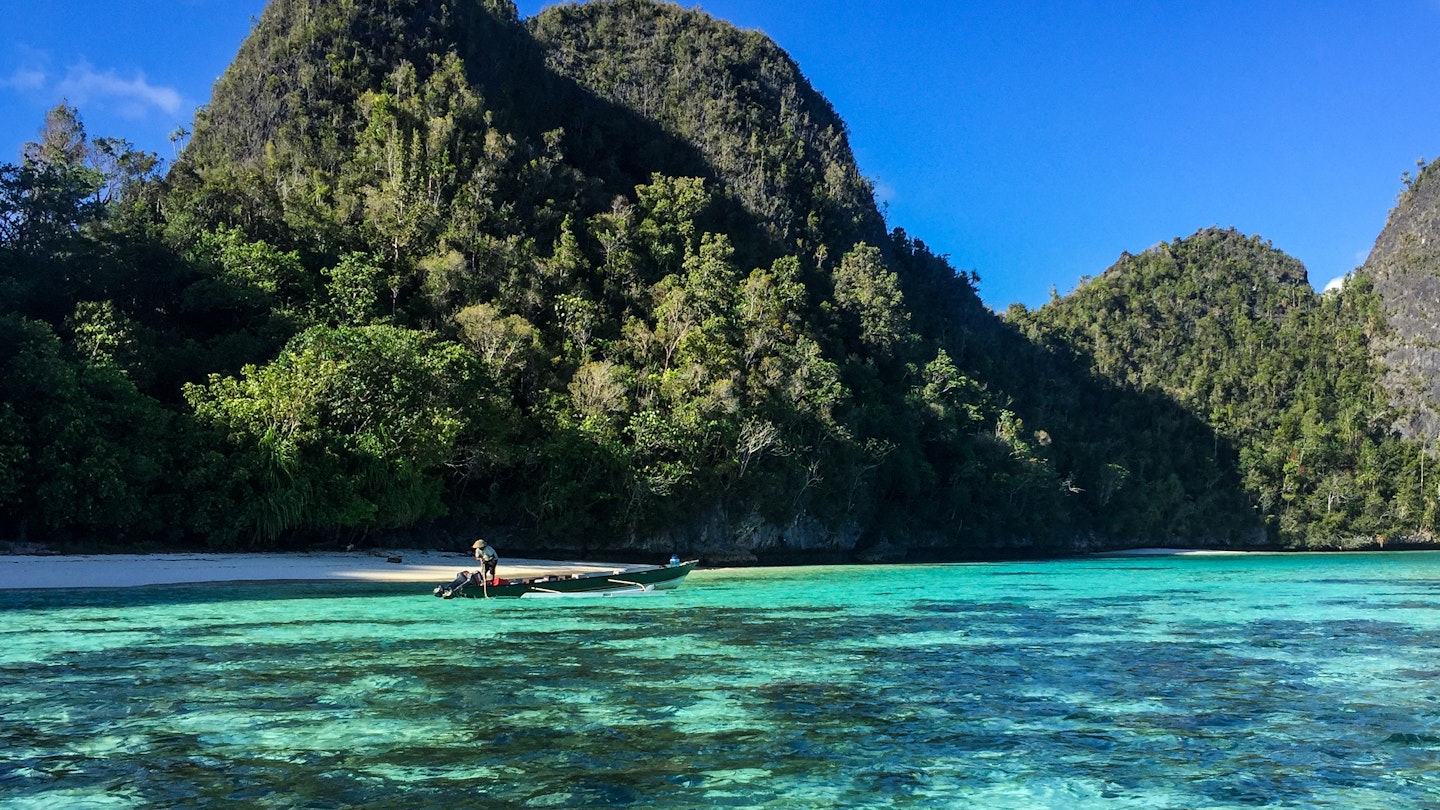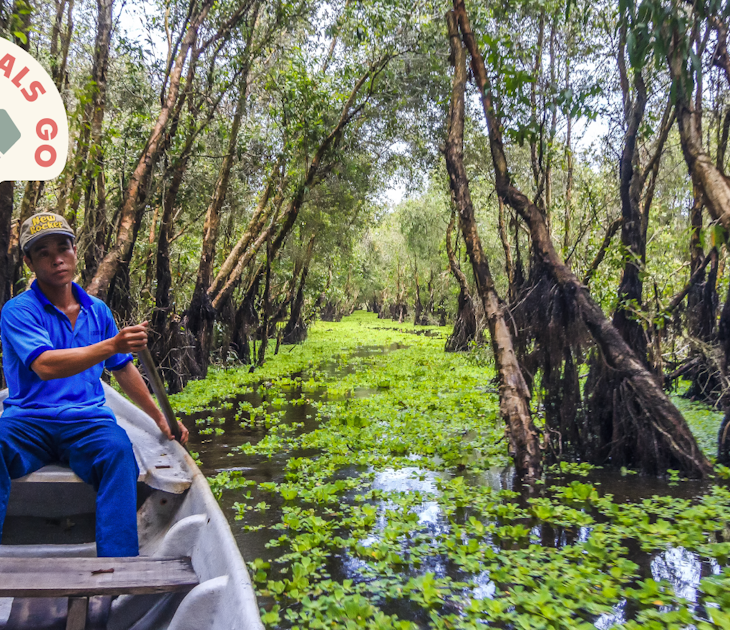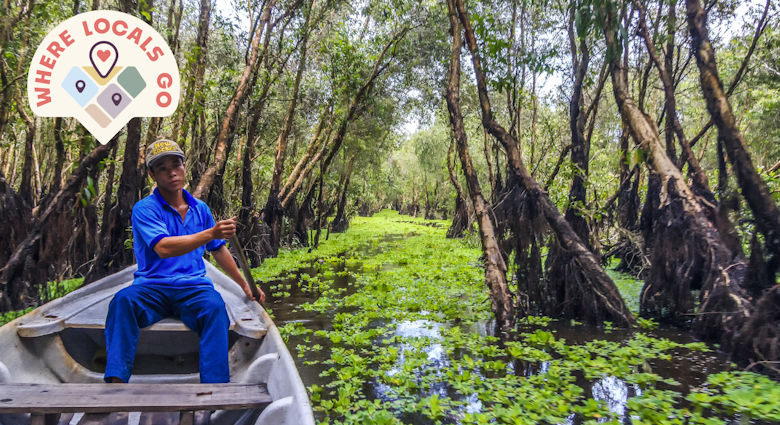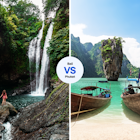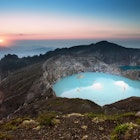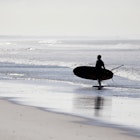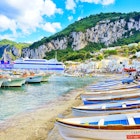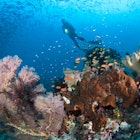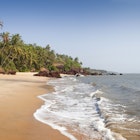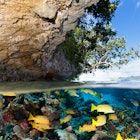Isolation is relative, even during the COVID-19 global pandemic.
It’s the morning rush hour on palm-tangled Pulau Wayag and the sunlit lagoons and beaches are teeming with life. Ahead of our tender, blacktip reef sharks congregate by the score in the shallows. Golden-spotted monitor lizards crash through the dense undergrowth onto the beach. Up in the canopy, carnival-plumed birds-of-paradise soundtrack the morning with whistles and upended fruit bats track our arrival with half-open, sleepy eyes.
There’s a logjam of life, and complete disregard for social distancing rules, but other than our boat and beach footprints there’s no sign of human life. We are all alone.
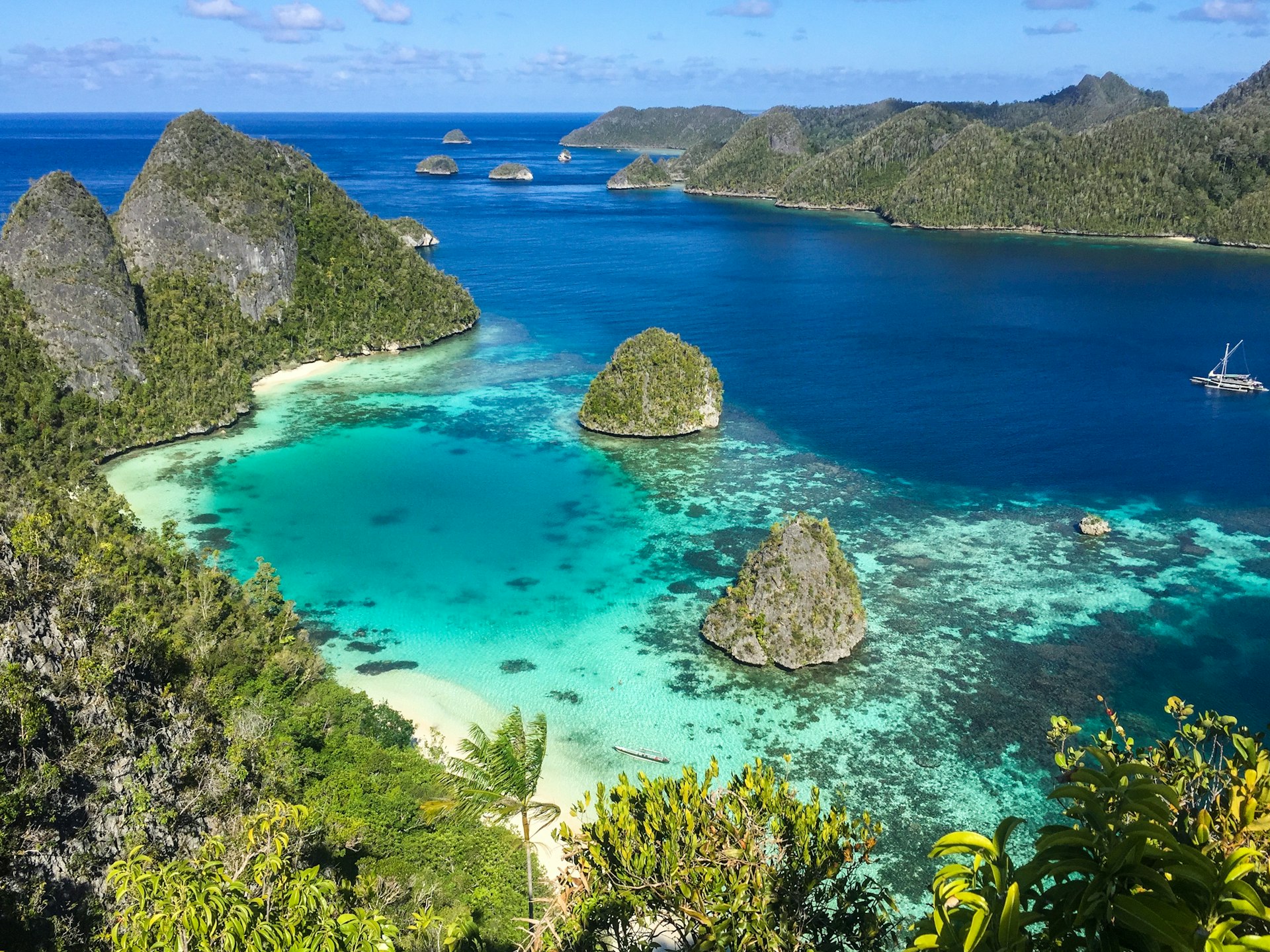
"Raja Ampat isn’t like the rest of the world. Self-isolation is the norm here."
The Indonesian archipelago of Raja Ampat (meaning “Four Kings” in Indonesian) is as far-flung as you can get nowadays. Arrive in West Papua, and you have to commit to sailing for 14 hours — or 200 nautical miles — across an unreliably mapped spider’s web of tidal channels to get to its farthest reaches. There are no airports or flights from gateway city Sorong, no roads either. If by chance you get stuck here, Robinson Crusoe-style, then too bad — you’ll have to wait until a passing ship or ferry goes by and you can thumb a lift. In other words, as ex-pat resident and sailing director Mick Taylor says, “Raja Ampat isn’t like the rest of the world. Self-isolation is the norm here. You can have a dive site to yourself, or a beach. A whole island even.”
Now, more than ever, the majority of us are pining for this kind of escapism. Locked down in our homes, apartments and inner-city condos, our world has shrunk, and yet Raja Ampat promises the antidote: a post-coronavirus trip after the lockdown has been lifted to a world-enlarging destination that puts dream-fulfillment front and center. The lack of wireless internet gives everyone a gift by making it easy to switch off, too. Not that you’d mind: flint-crested, karst-strewn Pulau Wayag is the most mesmerizing seascape you are ever likely to set eyes on. No tour groups jostle for space here. Few come and go.

"Raja Ampat is the world’s most luxurious prison."
So what is it about these wondrously-deserted mini kingdoms, most of which exist in little worlds of their own? French-Algerian scuba diver and Sorong resident Nadhim Kisa described to me how he’d moved from the Gili Islands — another isolated Indonesian paradise — because it was no longer out-of-the-way enough.
“There is a sense this is still undiscovered, at least in terms of tourism,” he says. “Sometimes, I feel like Raja Ampat is the world’s most luxurious prison. I love it, truly, but it’s pretty impossible to leave.”
First sighted by European sailors almost 500 years ago off Bird’s Head Peninsula, a skull-shaped hook of land on the island of New Guinea, the Four Kings’ archipelago once inspired the likes of Alfred Russel Wallace and Charles Darwin. Its extraordinary terrain and varied wildlife shelters a Noah’s Ark of mammals, birds and marine life, yet barely muster a mention on travel bucket lists. This feels all wrong to me. To come is to experience a new age of adventure. Life here feels acclimated to isolation, yet all the richer for it.

Isolation and self-reliance
Certainly, Raja Ampat’s remote island communities are well-schooled in the art of self-sufficiency. The mixture of Ambonese and Papuan communities, as well as sea gypsies, harvest lagoons with spears and nets as they have done for centuries. These are fine margins — fishing stocks are now heavily regulated and managed by the Raja Ampat Marine Park authorities — and of bigger concern nowadays is living in harmony with the seas and protecting coral reefs to help promote burgeoning tourism.
To that end, every remote kampung (indigenous Indonesian community) we visit — from sandbar-fringed Arborek to one-street Yenbuba to the rudimentary ranger station on Piaynemo — is home to a subaqueous marine world sparkling with life. After a while, the novelty of dugongs and dolphins, hawksbills and hammerheads, turtles and tasselled wobbegongs never wears off. At Melissa’s Garden, close to the steep-sided atolls of Piaynemo, there is a snapshot of life on the Great Barrier Reef as it was decades ago.
Marine diversity
In fact, Raja Ampat’s sea channels claim the highest recorded marine life diversity on Earth — a head-spinning three-quarters of the world’s coral species are found here — and unlike elsewhere coral bleaching is absent and reef systems are flourishing. The color scheme has a touch of Disney about it, or rather of the exaggerated brushstrokes of bright blue, sunshine orange and cartoon red. Think Finding Nemo on steroids.

There’s no discernible best way to explore Raja Ampat’s classic desert islands; the thinly-populated archipelago is stretched across 70,000 sq km (27,000 sq mi) of land and sea, so you need a local pilot or sea captain who is well acquainted with the area’s inaccurate sea charts. I traveled onboard the luxurious two-masted phinisi yacht Prana by Atzaro for five days, but there are many more budget-friendly operators and dive liveaboards with similar aims — to open up the islands to support their isolated communities with new revenue streams.
“Geography has long saved this destination from being overrun,” Taylor tells me. “There’s an in-built safety net already in place, so while sustainable tourism can help reduce the economic burden, the travel links are so taxing it puts most people off coming. If you see more than a couple of boats here, consider it busy.”
Come to think of it, in times like these, Raja Ampat is almost a paradox; the kind of place to dream about during lockdown, yet a destination you’d want to keep to yourself afterwards. It feels to me as though the tropical sun is the only thing it has in common with the rest of Southeast Asia’s washed up, over-touristy island chains.
One day, when the COVID-19 global pandemic is surely over, we’ll travel for open seas, fantastical islands and boundless territories again. Until then, Raja Ampat’s daily rush hour will continue unabated, away from our envious human eyes.
Mike MacEacheran traveled to Raja Ampat with support from Prana by Atzaro. Lonely Planet contributors do not accept freebies in exchange for positive coverage.
